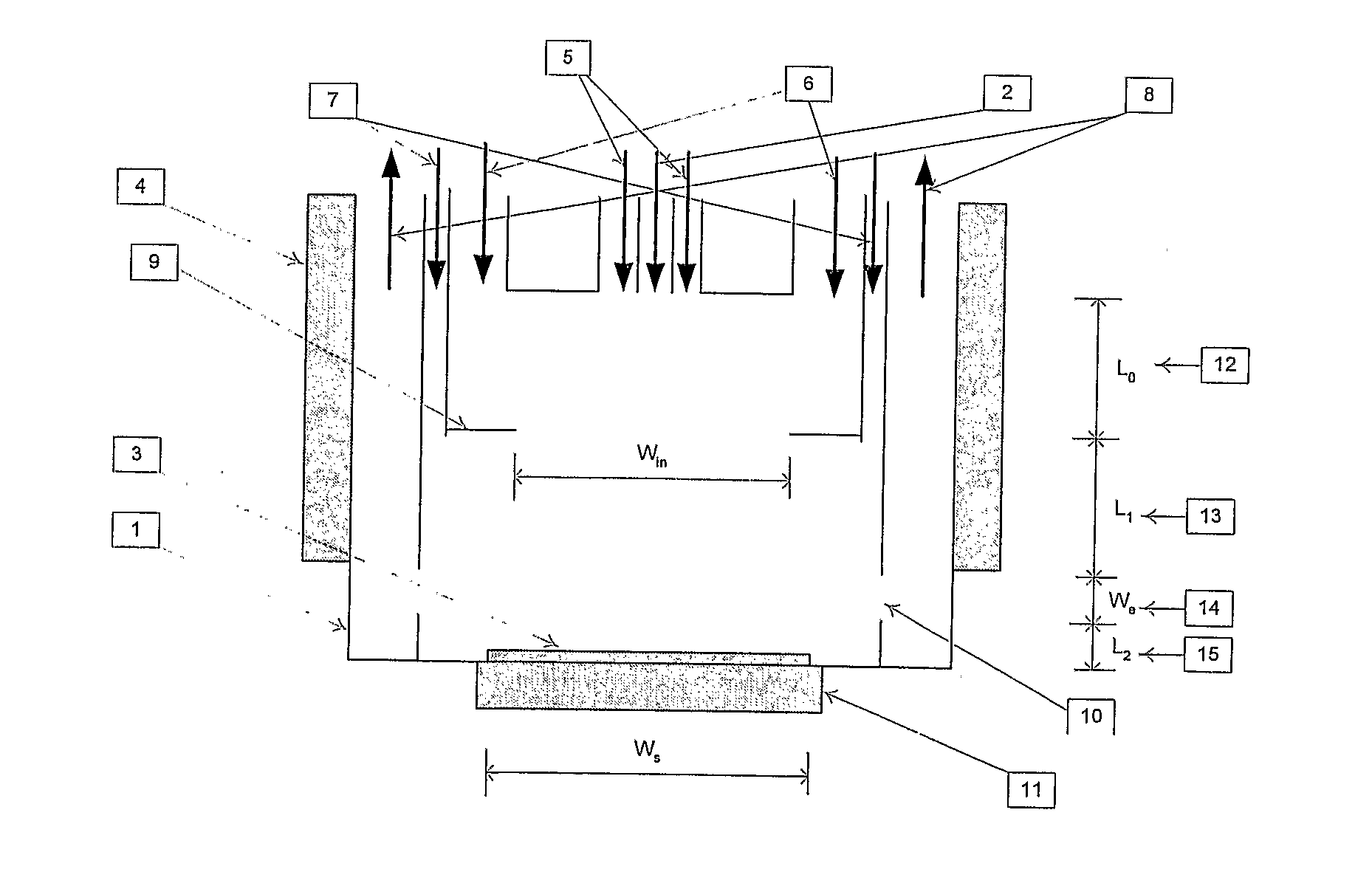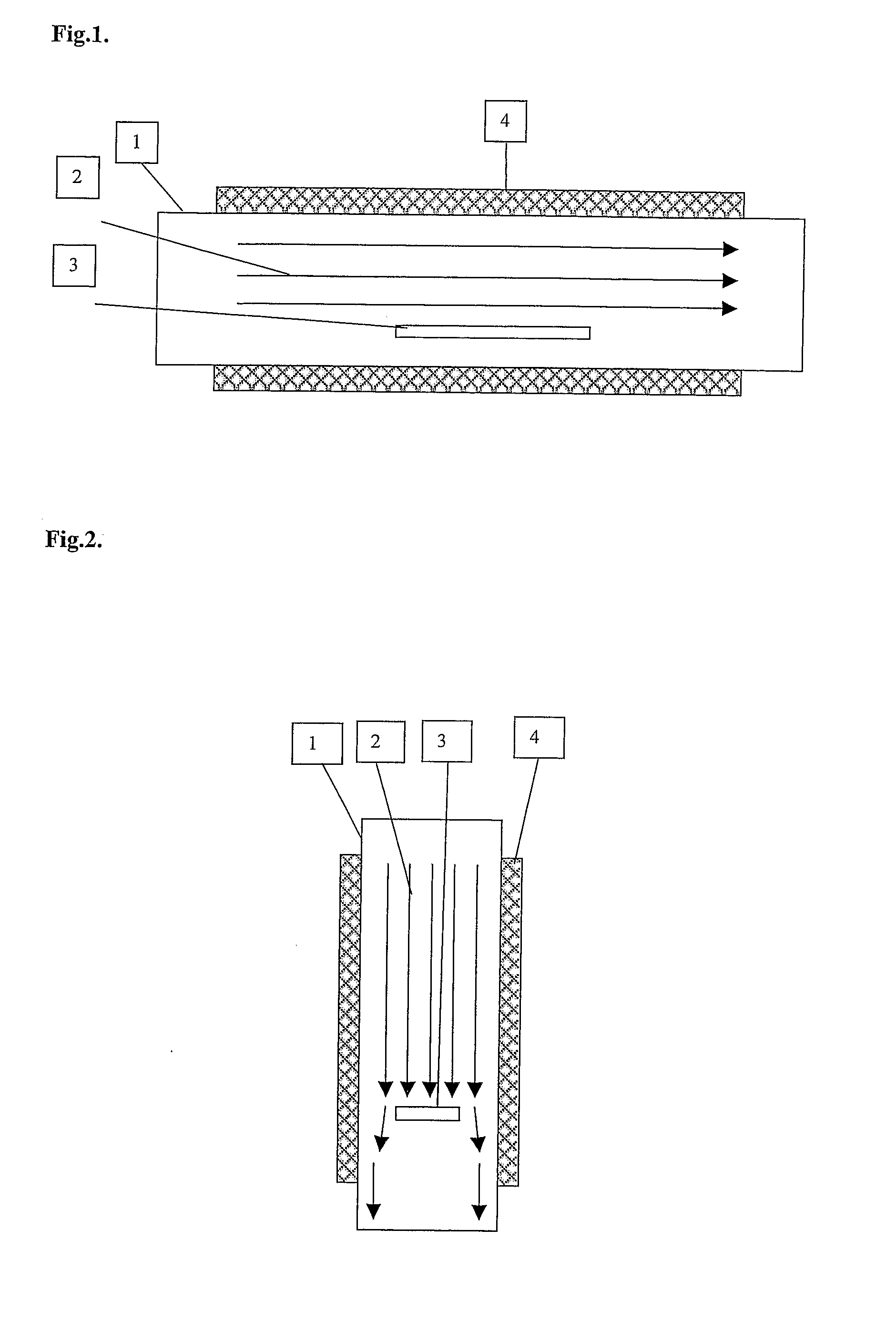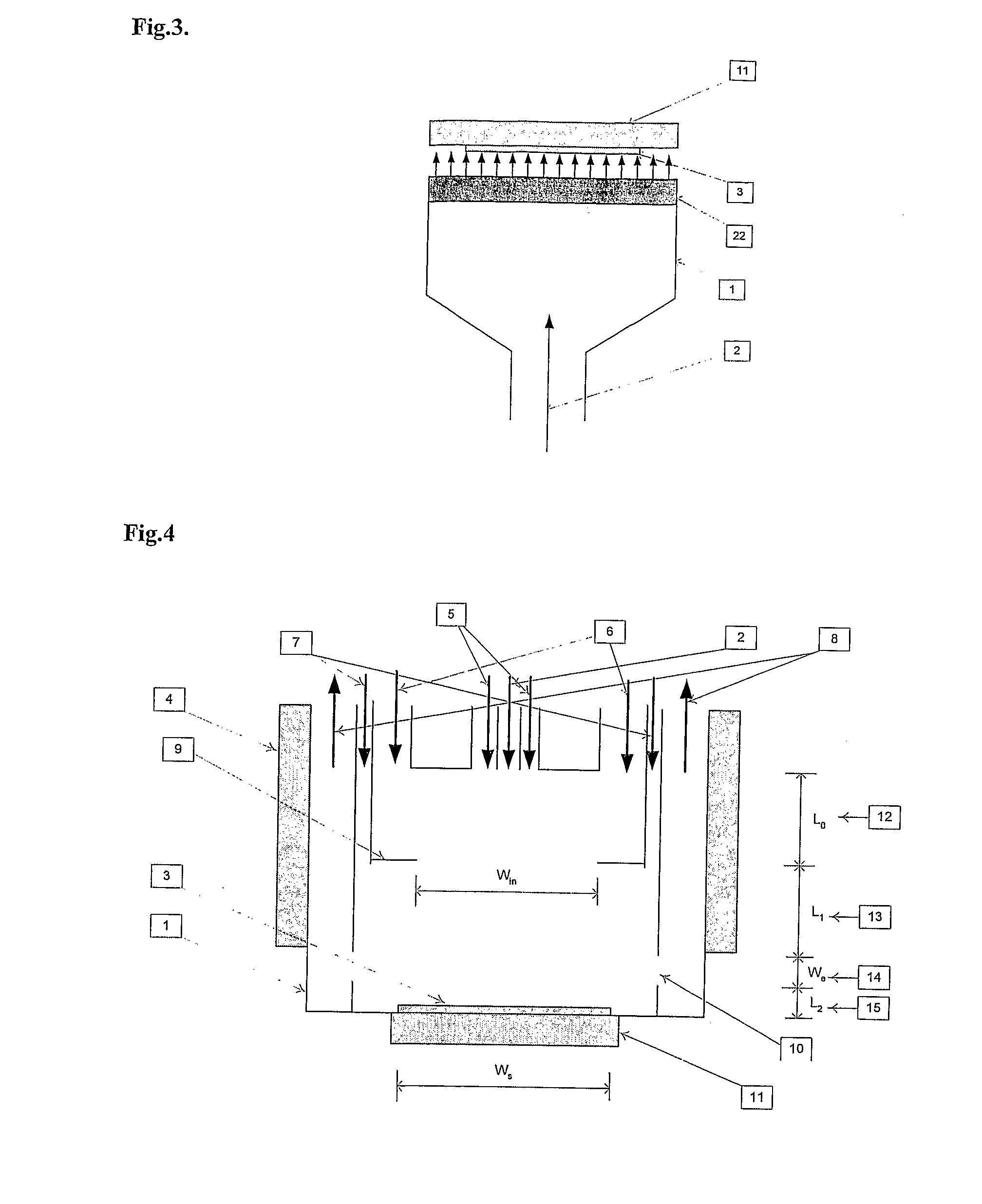Deposition Technique for Producing High Quality Compound Semiconductor Materials
a semiconductor material and compound technology, applied in the direction of chemically reactive gases, crystal growth processes, coatings, etc., can solve the problems of difficult control of processes, difficult to achieve simultaneous high gas utilization efficiency and good uniform growth, and difficult to scale up reactors, so as to achieve active control of growth and etch back processes and reduce the defect density of deposited materials
- Summary
- Abstract
- Description
- Claims
- Application Information
AI Technical Summary
Benefits of technology
Problems solved by technology
Method used
Image
Examples
example 1
[0064]A c-plane-oriented sapphire substrate of About 2 inches in diameter is loaded on to the substrate holder of a HVPE vertical reactor according to FIG. 4, 6, 7 or 8. The sapphire is deposited with MOCVD grown GaN of 2 μm thickness, and the sapphire is mechanically thinned and weakened.
[0065]The gas heater is heated to a temperature of about 500° C. N2 is introduced through all gas injectors 2, 5, 6 and 7 for about 30 minutes to purge the tube assembly of air. The pressure of the growth chamber is maintained at 1 atm. Substrates are heated to a temperature of about 350° C. NH3 flow at about 1000 sccm is introduced into the chamber. The external GaCl gas precursor is produced by passing 10% Cl2 in N2 through a Ga bubbler, the gas transport line being made of nylon with a heating wire to maintain the nylon tube temperature around 125° C. The conversion rate is nearly 100% for GaCl. Then the substrates are heated to a temperature of about 1050° C.
[0066]Gas delivery to the growth cha...
example 2
[0070]The growth processes are similar to Example 1 in the case of a vertical HVPE reactor shown in FIG. 5 or 9, except the gas precursor of GaCl is produced in situ up-stream in the growth chamber. It is recommended that NH3 is switched on when the gases and substrates are heated above 500° C.
example 3
[0071]The growth processes are similar to Example 1, but the time-modulated growth method is modified. The growth is divided into etch, annealing, enhanced lateral growth and normal growth. In this example, the flow of reagent gases is etch (GaCl off, NH3 and HCl on with a gas flow of 80 sccm), annealing (GaCl off, NH3 and HCl on with a gas flow of 5 sccm), enhanced lateral growth (GaCl and NH3 on, HCl on with a gas flow of 5 sccm, total. H2 flow increasing from 60 to 200 scorn) and normal growth (GaCl and NH3 on, HCl on with gas flow of 5 sccm, total H2 flow of 60 sccm). The time for the etch, annealing, enhanced lateral growth and normal growth period is set to be 1, 1, 3 and 2 minutes respectively.
PUM
| Property | Measurement | Unit |
|---|---|---|
| diameter | aaaaa | aaaaa |
| length | aaaaa | aaaaa |
| diameters | aaaaa | aaaaa |
Abstract
Description
Claims
Application Information
 Login to View More
Login to View More - R&D
- Intellectual Property
- Life Sciences
- Materials
- Tech Scout
- Unparalleled Data Quality
- Higher Quality Content
- 60% Fewer Hallucinations
Browse by: Latest US Patents, China's latest patents, Technical Efficacy Thesaurus, Application Domain, Technology Topic, Popular Technical Reports.
© 2025 PatSnap. All rights reserved.Legal|Privacy policy|Modern Slavery Act Transparency Statement|Sitemap|About US| Contact US: help@patsnap.com



